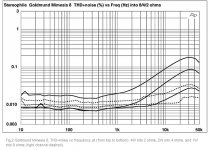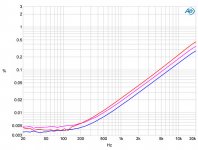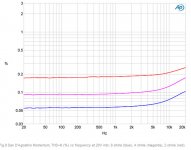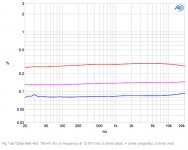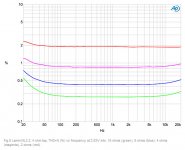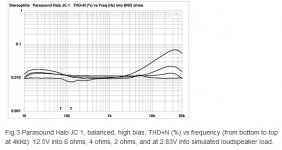I think we could skip the basics...depends on the open loop gain, more profit margin, less distortion
Vliv rezervy zisku na zkreslení
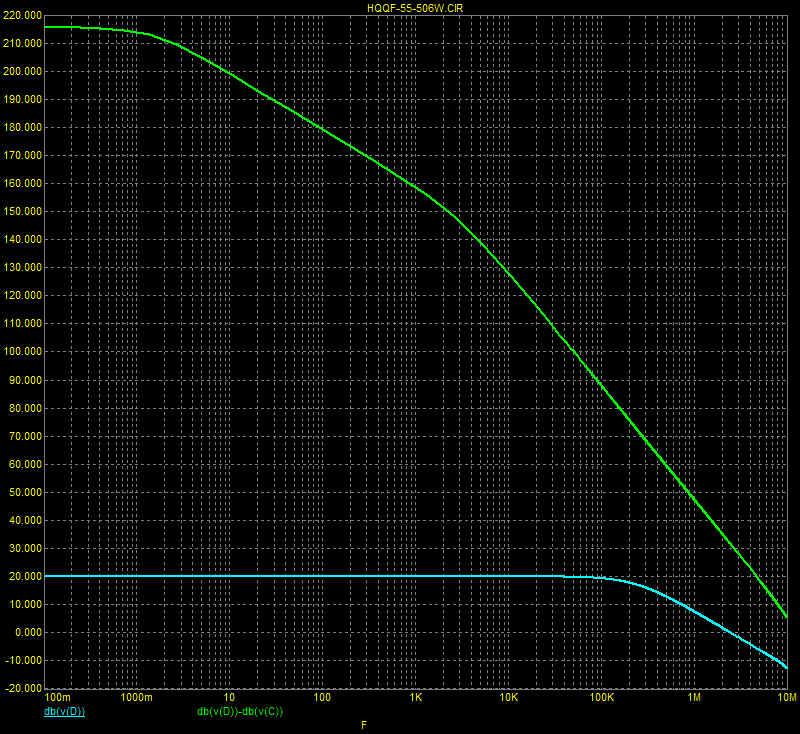
Hi-Fi zesilova?e a milníky jejich topologii
Anyway input stage of my amplifier has 157KHz open loop bandwidth.
PMA
It is not nothing special.
Measured in microvolts meters 0-1MHz, without filter, finished amplifier, S/N 120 dB
It is not nothing special.
Measured in microvolts meters 0-1MHz, without filter, finished amplifier, S/N 120 dB
40uV measured over what frequency range? How was it measured?
40uV over 20kHz makes 14nV/rtHz input voltage noise density for gain of 26dB. This would be nothing special.
PMA, you have experimented with real measurement equipment, any thoughts on the subjects?
Yes, but please let me leave it without comments (110 dB feedback at 10kHz ....) 😉
Regarding noise, 40uV over 20kHz unweighted at the output of power amplifier with standard gain of 26dB is no break-through. Anyway, he has not replied a question about his measuring method.
Regarding noise, 40uV over 20kHz unweighted at the output of power amplifier with standard gain of 26dB is no break-through. Anyway, he has not replied a question about his measuring method.
Last edited:
Yes, but please let me leave it without comments (110 dB feedback at 10kHz ....) 😉
Regarding noise, 40uV over 20kHz unweighted at the output of power amplifier with standard gain of 26dB is no break-through. Anyway, he has not replied a question about his measuring method.
You think sky high feedback at 10KHz is mandatory for good sound?😉 I think I could live with my amplifier in open loop and there is a lot low feedback designs that are popular and sound very, very good...
Last edited:
If your amp is reasonably linear to begin with, you won't see any re-entrant distortion (or very little of it).
The original article that showed it was on a single FET stage, which is nonlinear as hell.
Jan
That is true and is a point that is only now being better understood (with much credit for you of course).
Despite this, folks i think miss the fact that they are applying small amounts of feedback across a single nonlinear device - every time they add emitter/source degeneration to an output device. Ian in his article makes much the same point, suggesting that feedback is best applied globally, after the assymmetrical distortions in an output stage have been largely cancelled out. Not really on topic here perhaps but worth bearing in mind.
Some graphs from popular amplifiers for reference- Stereophile measurements. All amps are classAB :
BTW I guess most of members who are interested in amplifier design know some details of construction of amps mentioned...
So, any conclusions? 🙂
Hi,
Its interesting - the order you placed the graphs: based on ONLY that one test data, I would prefer them in the same order, left to right.
THx-RNMarsh
Hi,
Its interesting - the order you placed the graphs: based on ONLY that one test data, I would prefer them in the same order, left to right.
THx-RNMarsh
I agree, but if second and third amp switch places 🙂
Now thd vs f graph for the same amplifiers from Stereophile. Look what a great job D`Agostino and Dartzeel did with low feedback designs 😉 :
A wouldn`t like a graph from amp No.2 is from my amplifier...
A wouldn`t like a graph from amp No.2 is from my amplifier...
Attachments
Last edited:
And now look what a job Lamm did with a Tube amp and output transformers (forget the distortion figure right now...) :
😉
That's what I said. if you increase the lf distortion on purpose or by incompetent design, the curve will become flat, but it's a bad amp!
Flat THD vs F is only good if it is very low at all F's !
Jan
That's what I said. if you increase the lf distortion on purpose or by incompetent design, the curve will become flat, but it's a bad amp!
Flat THD vs F is only good if it is very low at all F's !
Jan
Jan, I don`t think the LF distortion is raised on purpose, or Vladimir is incompetent designer, and you know that. It`s a tube amp and 0,5% for a NGFB tube amp at 8 Ohms is not bad result at all.
Do you really think that it`s all about low distortion?? That would be to easy and everybody would make best amplifiers....but I think you know that also...
SOTA design would be <0.001% anywhere, regardless amplitude and frequency 😉
PMA I think you`re smarter than that, you`re just simplifying things...😉
I guess then everybody would be listening to that Halcro magical ultra low distortion amplifier, but that is not the case...
I thought you guys like to enjoy listening to music, and you can do it without ultra low distortion amplifier (I`m not talking about sweet euphonic distortion of tube amps).
PMA could you please name the commercial SOTA amplifier that has "<0.001% anywhere, regardless amplitude and frequency"?
John`s work looks pretty good:
I think this amp is noise-limited - if not, the THD curve would continue down at lower frequencies.
Jan
- Home
- Amplifiers
- Solid State
- Distortion vs Global-Feedback (simulated)
